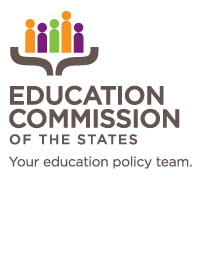As the education and workforce landscapes change, the need for postsecondary education has increased for students. Estimates show that 72% of jobs will require postsecondary education or training by 2031. Nondegree credentials (e.g., certificates, industry credentials and professional licenses), which can typically be completed quickly, continue growing to fill these needs. While the value is clear, leaders face challenges in data collection and use, but many states are reporting promising practices to respond.
The Value of Nondegree Credentials
Nondegree credential programs have already grown in prevalence; in the 2021-22 school year there were:
- Over 1 million certificates awarded.
- Almost 17,000 individual credential issuers.
- Over 600,000 credentials provided by nonacademic providers.
Collecting and connecting nondegree credential data with workforce outcomes is essential for states and the students that they serve. For students, access to comprehensive data helps make more informed decisions about programs that lead to higher wages. It also provides students with information to understand pathways to current credentials and the possible connections to future education and training. Clear data connections between nondegree credentials and workforce outcomes help students invest in programs that demonstrate real career benefits.
For states, tracking nondegree credentials allows collection of real-time data on who completes these programs, the industries they enter and how their earnings change over time. Using these trends, states can evaluate short- and long-term outcome data to address disparities in access and success among student groups. This helps leaders understand which programs provide strong employment outcomes so they can adjust funding or policy decisions accordingly.
Data Collection and Use Barriers
While the benefits of collecting and connecting nondegree credential data are numerous, challenges remain in standardizing and effectively using these data. A major issue with data collection is a lack of standard definitions across and within states and the federal government. Inconsistent data collection efforts at the federal and state levels further complicate efforts to create a unified understanding of outcomes. In addition, gaps in data infrastructure lead to poor data quality, which complicates assessments of program effectiveness.
Another challenge is alignment among relevant departments responsible for data collection and reporting. State systems may not be set up to facilitate this type of sharing. In addition, other agencies, departments and private credentialing bodies may award nondegree credentials that are not typically part of education and workforce pathways and may not be contributing valuable data to the statewide system. For example, a commercial driver’s license granted by a state’s department of motor vehicles or an industry-recognized certification.
Promising Policy Approaches
Supportive state policies can aid in the creation of effective collection and reporting systems. State policies can require data collection and establish standard data definitions to create consistency within the state.
Credential Engine uses credential transparency to provide an understanding of each unique credential and how it contributes to career pathways. States can leverage credential transparency description language standards to define credentials in their own data systems. We found at least 33 states have state longitudinal data systems that can serve as the foundation for nondegree credential information collection and sharing among state departments and agencies.
State policies can require or incentivize nondegree credential collection. Connecting data to workforce outcomes, including employment status and wage data, is key to helping both policymakers and students. Finally, it’s essential for these connections to be reported publicly in formats that are easy to understand like in an interactive dashboard.
For example, Strada developed the State Opportunity Index to help states unify postsecondary education with pathways to opportunity. One of the measures is data collection, including nondegree credential data, to highlight clear outcomes for students. At least 12 states are considered leaders in collecting this data. Two examples:
- Kansas leads in these efforts through its collection of nondegree credential data linked to employment outcomes. The data is publicly reported through a portal connecting NDCs to employment and wage data.
- Utah is recognized for collecting college-issued nondegree certificate data, linking it to employment outcomes information, and publicly reporting the data through this portal.
Looking forward to 2031, states like Kansas and Utah show promising approaches for others to align these credential types with the data currently collected by the state and the needs of their respective workforces.









